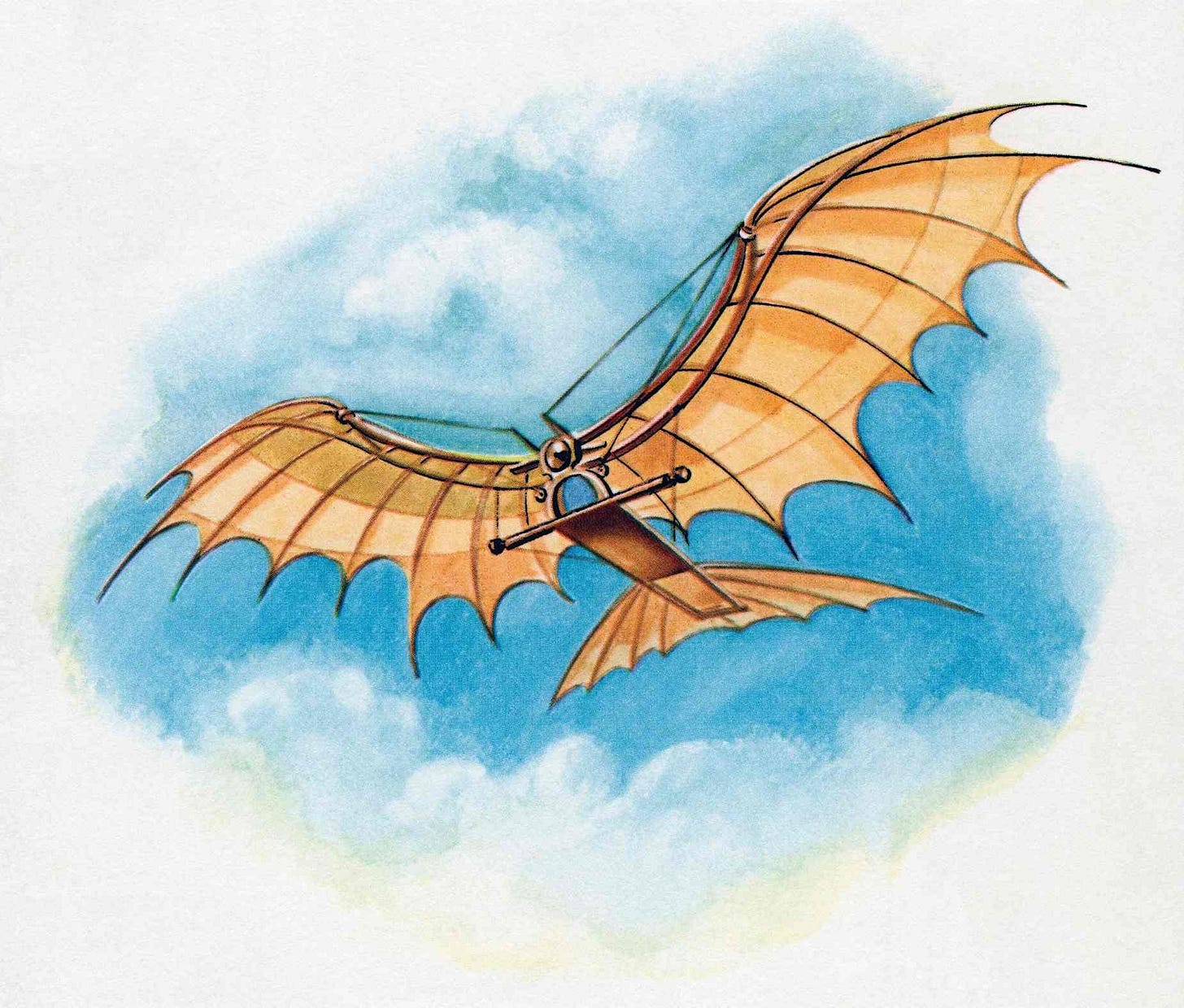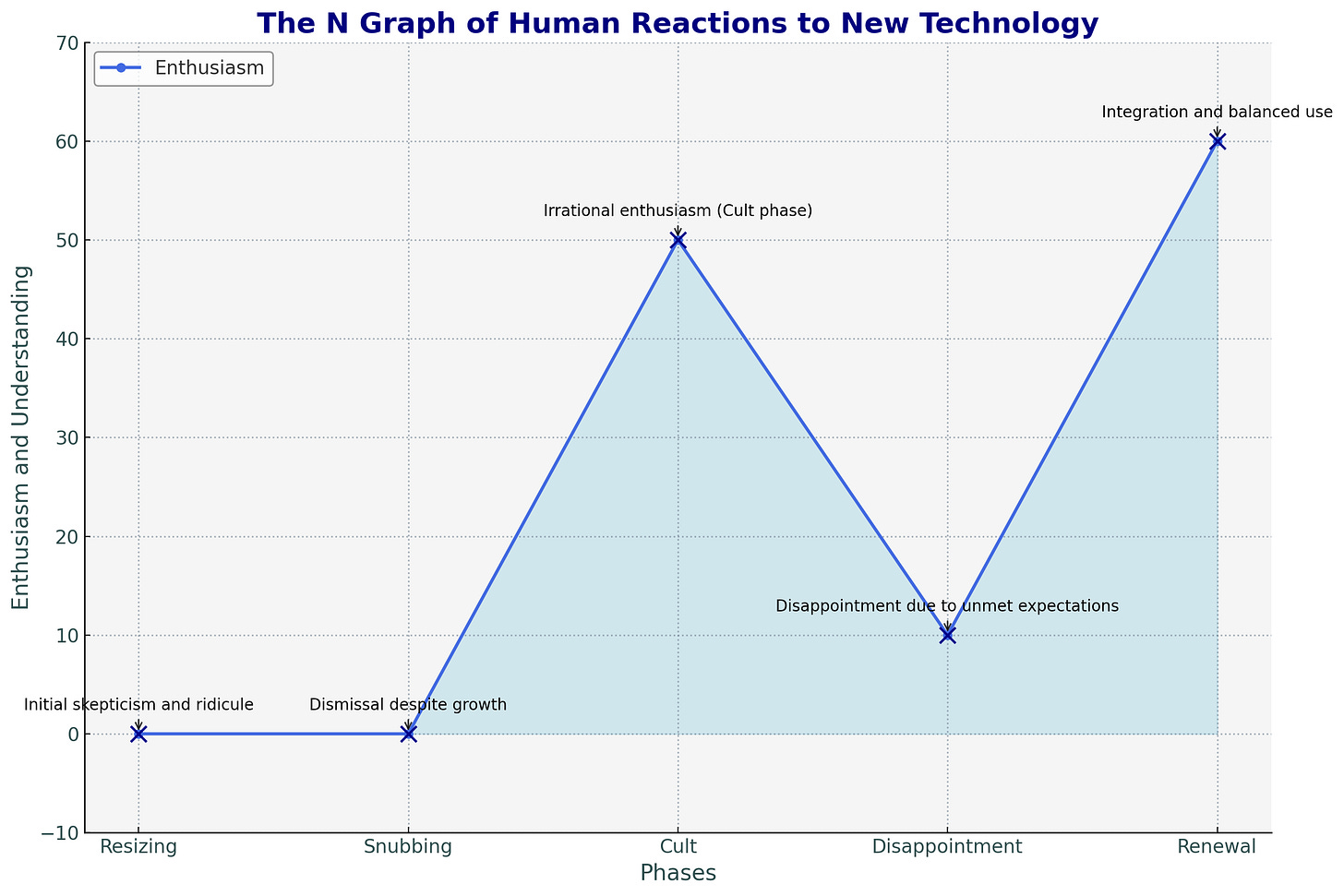Internet journalism, the journalism to end all journalism? - Chapter 12
The 3 contemporary rules of journalism
Humans. We are predictable animals. Since our technology is only an extension of ourselves, it does not necessarily follow that technology is always predictable. It’s as unpredictable as human behaviour. But we know that many writers and thinkers have imagined a technology that became reality, and we can also document how humans’ reaction to technology is predictable.
It doesn’t really matter what kind of new technology we are examining. Radio, TV, electricity, trains, the alphabet, or the Internet. Reactions are often the same.
The first phase is resizing. It’s when people make fun of the new invention. Airplanes? Ha, ha, look at those fools dropping off the Eiffel Tower to their death wearing wings! Look at Leonardo’s crazy dream of the flying machine. What was he on? Look at those two brothers wrecking fields in the Southern U.S. And then you have aviation with the restructuring of global society that it brought about as its message in the medium.
Then, shortly after there’s snubbing once the invention begins to take off. It’ll fail. Text messages on phones? No way, people are into beepers! Radio? What a waste of time, who wants to sit and listen to people running their mouth off all the time.
So on our graph of the reaction to new technology, we see that enthusiasm and involvement with the medium is at close to 0 in the resizing and snubbing phase.
But then the technology spreads. The medium percolates its message to slowly alter the patterns of society and on the graph we see the line rising and rising and rising to 15, 20, 45, 50 degrees of enthusiasm.
It’s called the cult phase, where everyone has more enthusiasm than understanding. The fad comes in and “you’ve just gotta have it!” Do what? It doesn’t matter. You’ve got to have a smartphone. You’ve got to have a transistor radio. You’ve just got to have one. It’s an irrational enthusiasm dictated by pleasure more than by the calculation of how to use the medium.
As euphoria set in you can be sure that slowly, on that graph of how a new technology affects the behaviour of a society, you will see that slowly from 50, it’ll go back to 45 and 30 and linger at 10 points. Not quite zero. But close.
It’s the phase of disappointment. Expectations were too high, because they were irrationally dictated by an excess of passion for the charming unknown. When the new medium does not do what it was perceived it was its promise promised, then there’s disillusion. We’re still using those things, but with less enthusiasm. The medium has reached its limits.
And as the barriers of the new technology become more evident, only then things begin to balance out. On our graph we now see some enthusiasm and understanding increase again to 20, 30, 45 and maybe reach even 60, higher than the euphoric stage, as the phase of renewal and potential resurrection brings in a true integration of the medium in society. That’s where it’ll settle, until a new medium comes along to change it all.
I call it the N graph, as it starts low, goes high, then low and high again where it settles once you have a TV set in every home, a radio in every car, Internet in every smartphone. Or in everything. In your clothes, refrigerator, chairs, ears, pockets.
Indeed Internet, by absorbing so many of the previous media, begs this question: is this the end of all other media? Is this a different phase for humanity in which we found a new grid on which to lay all previous invention, a separate reality of alternative facts of disappeared professions, a brave new world in which all rules are subverted?
It would seem so. But it really isn’t.
Media is an extension of humans, they replicate our thoughts, patterns, even feelings. If Internet seemed to swallow up what preceded it, it’s only because every new medium changes the nature of the medium that preceded it.
It is important to keep this in mind when looking at communication, and specifically at journalism.
Keep reading with a 7-day free trial
Subscribe to GlobalSpin with Carlo Pizzati to keep reading this post and get 7 days of free access to the full post archives.






